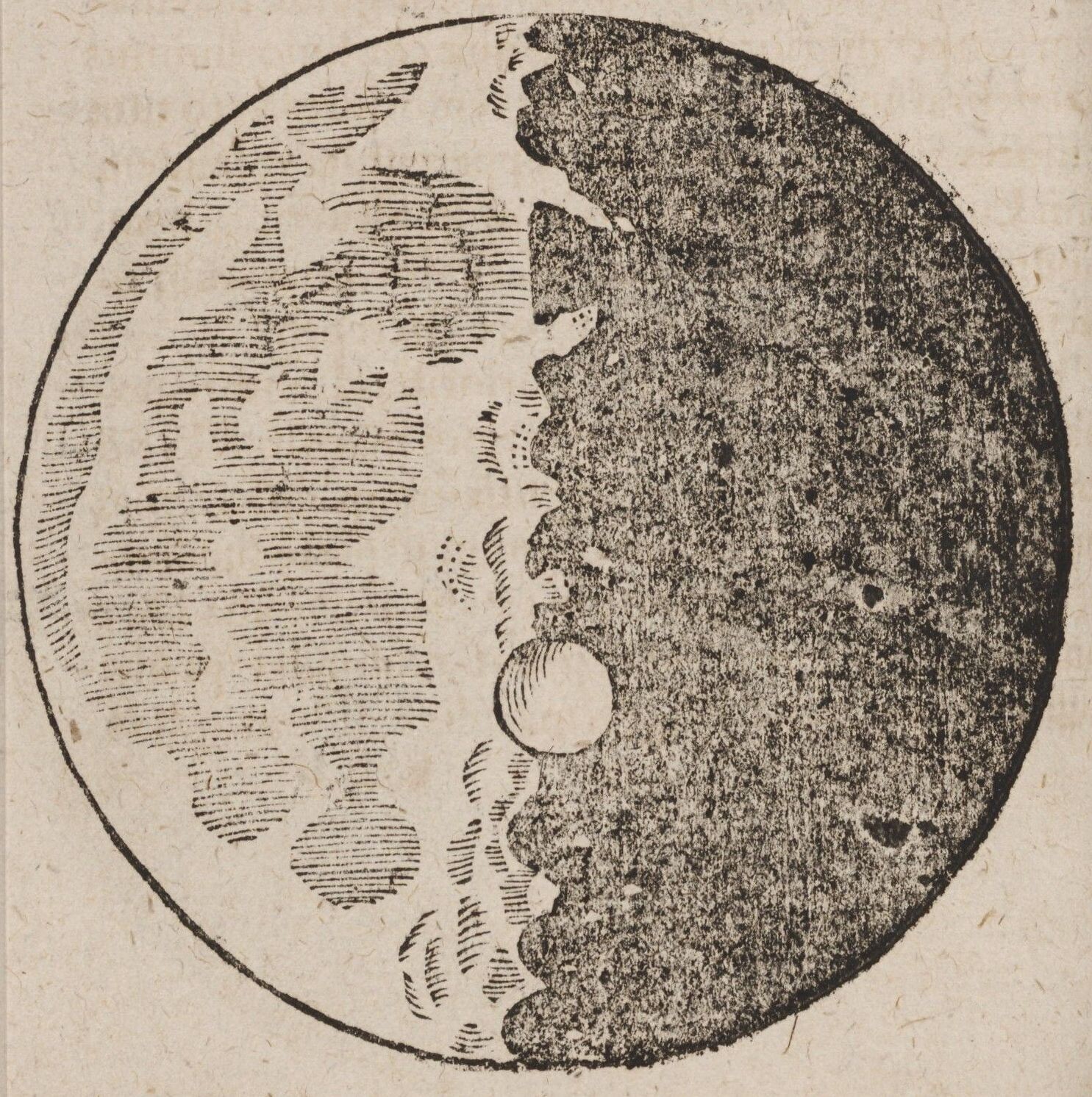Above: Detail, p. 18. Galileo, Siderevu nvncivs, QB41 G33 1610, copy 2.
Galileo’s Sidereus nuncius [Starry Message], published in 1610, was the first printed depiction of the moon as seen through a telescope. Galileo’s profoundly influential images depicted the moon’s topography as mountainous with several lunar planes. In addition to his representation of the moon, Galileo (1564–1642) revealed two additional discoveries in Sidereus nuncius: he was the first to note four “planets” (moons) that orbited Jupiter, which he called Medicean stars, and he realized that what appeared, to the unaided eye, to be a heavenly mist was actually made up of smaller stars.
The photograph below was taken in 1966 by Lunar Orbiter 1, an unmanned spacecraft, designed, among other scientific objectives, to find a smooth and safe surface for the planned lunar landing. It shows the Earth as seen from the moon—the first time we saw our planet from another astronomical body.
Post updated October 17, 2022.

Featured Objects:
QB41 G33 1610 Galileo, Siderevs nvncivs
